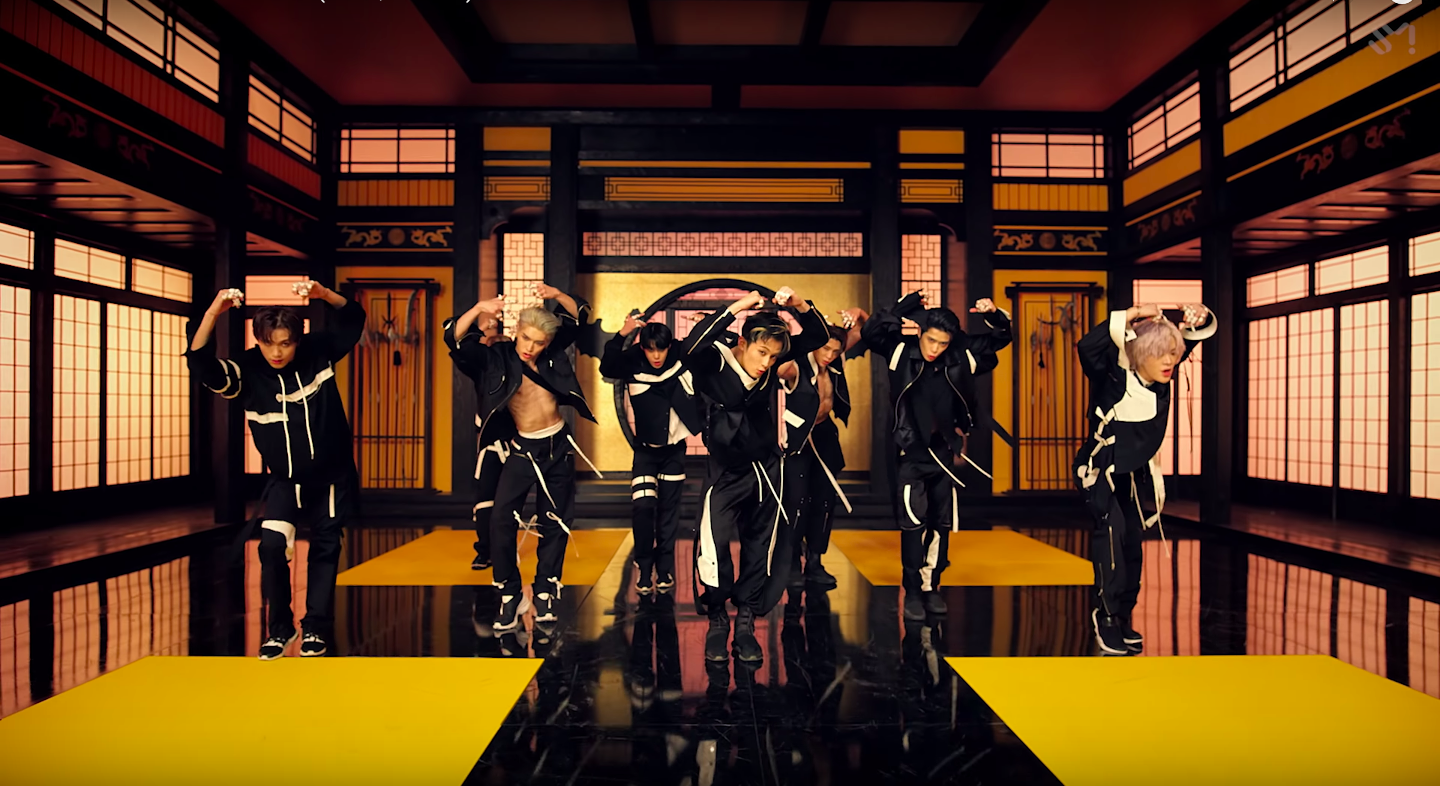“Let me introduce you to some new thangs
new thangs new thangs.”
Thus kicks off NCT 127’s title track of their newest project, NCT #127 Neo Zone, which is their second studio album since NCT #127 Regulate (a repackage of their first LP) in 2018. “Kick It” dropped on March 4, preceding the release of the group’s full-length album two days later.
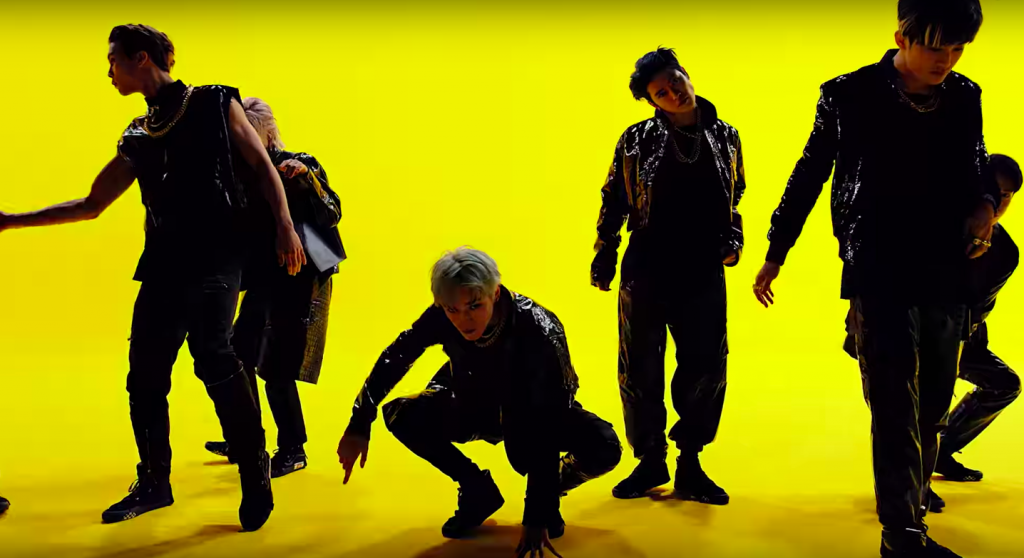
The aesthetics of the “Kick It” music video begins to solidify the meaning of “Neo Culture Technology,” the full name of NCT. “Kick It” blends traditional and modern elements, best seen in the sets, its play with stark contrasts, and the heavy inspiration from Bruce Lee. One of the main sets early in the music video features the interior of a traditional Chinese house. The symmetrical harmony of the space creates a juxtaposition with the black and white costumes of NCT 127, which are made of a looser, more flowing material. The traditional interior contrasts with the members’ movements as well since their choreography does not allow them to dwell in one area for long, focusing, instead, on sharp, quick gestures.
“Kick It” utilizes stark contrasts further in its juxtaposition of the piercing neon lights with the fluidity and smoothness of Chinese calligraphy. In addition, one of the last sets purposefully places an urban landscape, complete with sleek yellow and black motorcycles, around another piece of traditional Chinese architecture, this time, a Chinese archway.
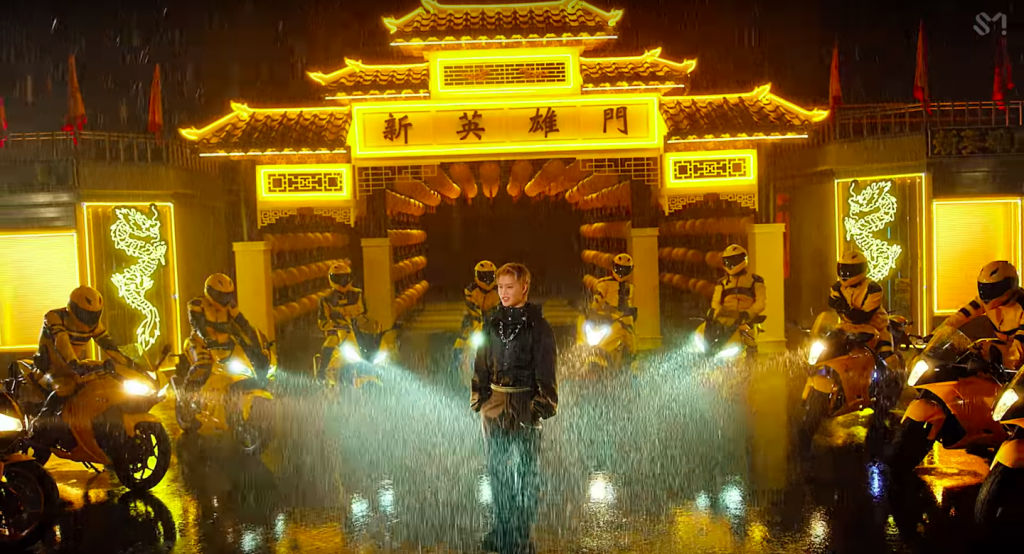
The juxtapositions, however, are not only visual. Early in the music video, Haechan and Jungwoo sing in front of a golden dragon tapestry, which appears a couple more times, which then connects with Taeyong’s reference to the Bruce Lee film, Enter the Dragon, during his rap verse. There is additional meaning beneath this transition as Lee was born in the year of the dragon, and one of Taeyong’s nicknames is “용,” meaning dragon, thus NCT 127’s leader starting off his verse with “Enter the Dragon” creates fluidity on multiple levels.
“英雄“ (yīng xióng) denotes the Chinese title of “Kick It.” Meaning “hero,” NCT 127 weaves in direct and more subtle references to one of their heroes, Bruce Lee. In Mark’s rap verse, he mentions “Jeet Kune Do” (“The Way of the Intercepting Fist”), which is what Lee called his martial arts expression. One of the central philosophies of Jeet Kune Do is “using no way as way; having no limitation as limitation.” Mark’s line, “Keep it movin’ like ‘Jeet Kune’ evokes this belief and its foundations of simplicity, direction, and freedom—or “the form of no form.”
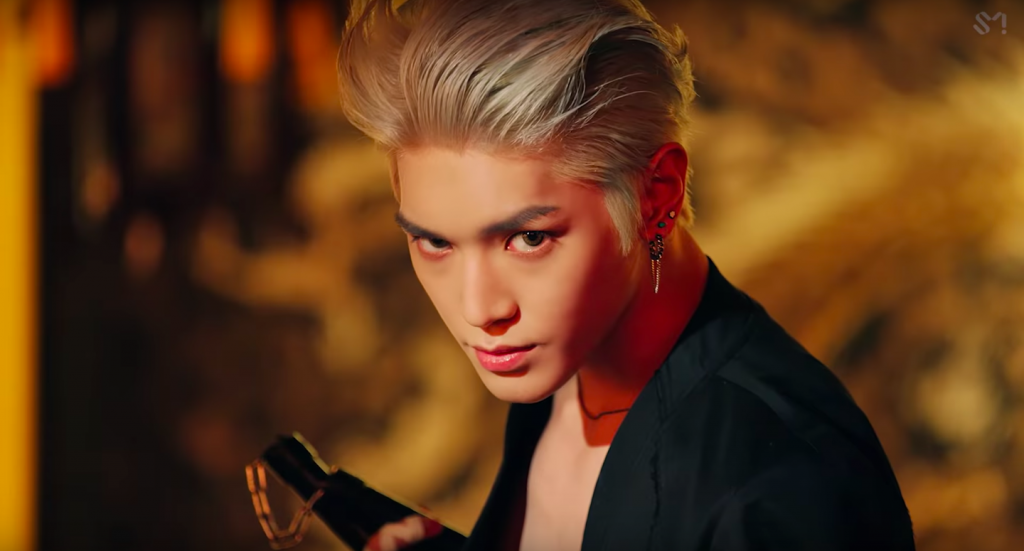
As explained earlier, Taeyong name drops Lee’s film, Enter the Dragon, the first Hollywood/Hong Kong co-production, which was released after Lee passed away in 1973. Taeyong suggests a visual connection to Bruce Lee in his solo scenes where he holds a nunchuck, which was often the weapon of choice for Bruce Lee’s characters.
Mark also becomes like Bruce Lee during the dance break in “Kick It.” The rapper takes center stage in the recreation of a fight scene with the other members of NCT 127 surrounding him, not as his bandmates but as his enemies. Mark, the modern-day Bruce Lee, fights to create a break in the circle, the camera accentuating his punches and high kicks.
While the Korean and Chinese titles translate to “hero,” the choice to officially name and promote the song as “Kick It” makes sense, especially in light of the music video. “Kick It” is action-driven compared to the more passive “hero.” In addition, this title has a stronger connection with the Bruce Lee inspirations as well as the genre of kung fu films in both the lyrics and the music video.
The music video takes the literalness of “Kick It” and translates it into various creative elements throughout. From the first second of the video, viewers are confronted with the aesthetic choice of the palette of the music video, notably the high contrast between the strong yellow of the background and the deep blacks of NCT 127’s outfits.
The yellow set for the group choreography is deceptively simple. The simplicity of the set, however, compared to the incredible detail of the other two sets, does not detract from its effect. The use of strong flashing lights directly over the members creates dramatic shadows and silhouettes giving these scenes movement even when the members are still as well as an element of visual complexity. The lights shine in time with the sharp beats, particularly in the beginning of “Kick It,” and, later, they pulse as a unified block of light in the background so NCT 127 is more backlit while they dance.
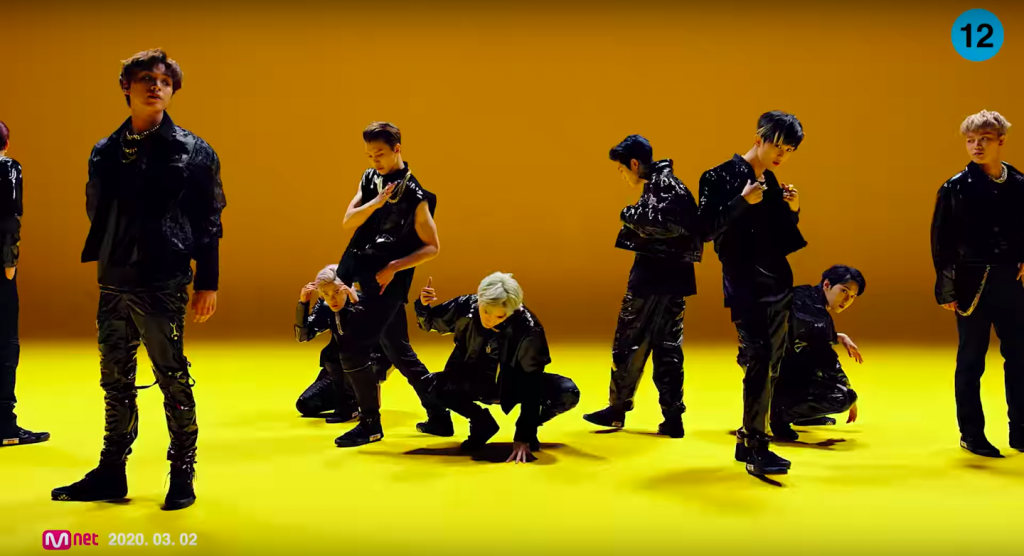
As a more literal interpretation of “Kick It,” many of the transitions in the music videos are kicks or punches. Furthermore, there are select moments when the camera cuts to numerous different scenes in a fast succession, creating a similar effect of leaving the viewer reeling from the sharp shift. The non stop movement of the camera, the lights, and the members in “Kick It” never allows the eyes of the audience rest, thus matching the lyrics of “kicking it” to the visuals.
The song also has an auditory “kick” to it. The unique NCT 127 “noise” with its distinctive mash of sounds against the shouty chorus creates tension between these elements in an intentional way that shocks the audience’s ear at the first—or even second—listen. In one of Mark’s earliest lines, he raps, “bass kick swingin’ like I’m Bruce Lee,” referring to the bass of the song with a play on words.
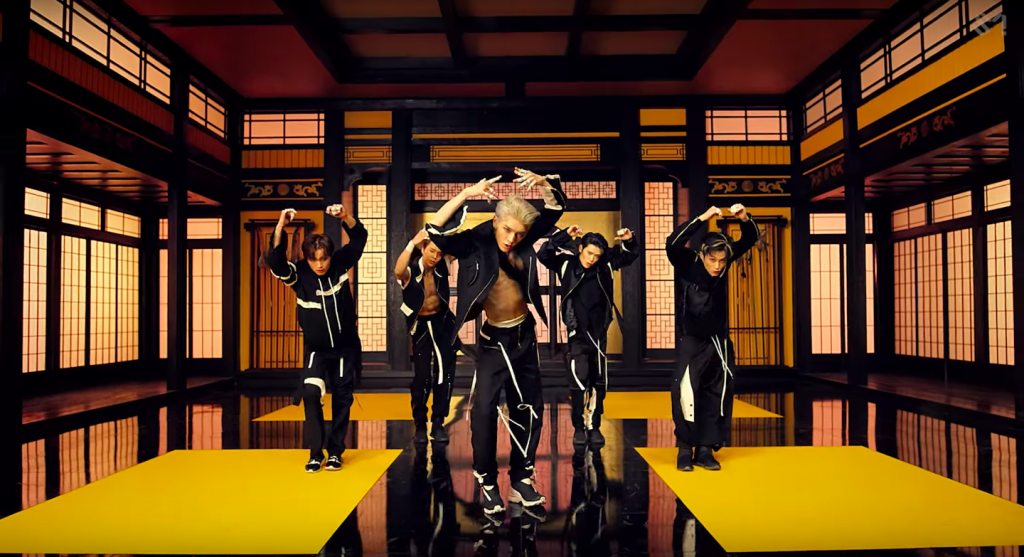
NCT 127 emphasizes the aggression of “Kick It” through their choreography. The members are constantly leaning into the viewer’s space as they are always moving towards the audience through their gestures, their hands, and the occasional roundhouse kick. The point dance of the choreography, has NCT 127 getting closer to viewers, in which they have their arms above their heads, hands framing their faces, leaning forward, and moving their bodies from side to side, punctuating each beat of “new thangs.” The visual elements of “Kick It” are just, if not more, as important as the song itself, as audio effects only go so far. “Kick It” does feel like a song that needs the music video of the performance (similar to the effect of “Black on Black”) to provide an enhanced experience.
“Kick It” sees NCT 127 in a time of transition, marking the beginning of a new era of greater confidence. The group drew on distinctly Asian inspirations — Bruce Lee, most notably — and took a stereotype (martial arts and Asians) and reclaimed it in expressing their admiration for this hero of theirs. It is a struggle to create a balance in sound and visuals that keeps in mind a broader audience, especially with K-pop’s growing global status, while maintaining those Asian roots.
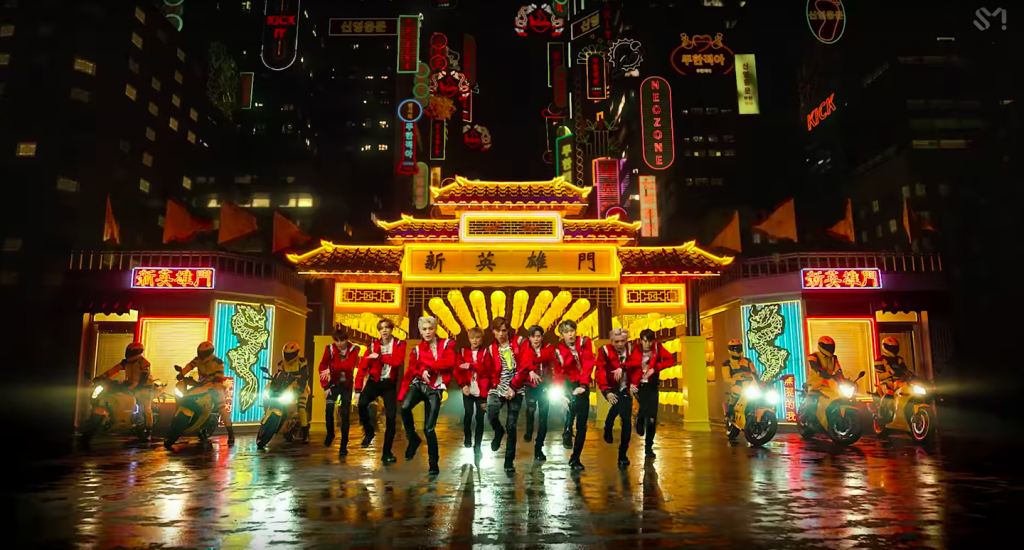
The group steps into a new era with the release of “Kick It,” followed by NCT #127 Neo Zone. In the music video of their title track, the last set shows the members in front of a traditional Chinese gate with the characters “新英雄門” (xīn yīngxióng mén) on it, which translates to “new hero gate.” Just beyond the traditional architectural structure, the camera unveils the words “Neo Zone” and “Kick It” among other Korean words in neon lights as it pans out to display the entire urban landscape.
Before NCT 127 moves on to becoming “new heroes,” however, they reflect on their past.
“After repeating the same scene of so many days
I can just knock yesterday’s me down and shout out
To me no more trauma.”
Doyoung and Yuta close the second verse of “Kick It” with confidence and the recognition of their growth in overcoming challenges, including the obstacles that their past selves presented.
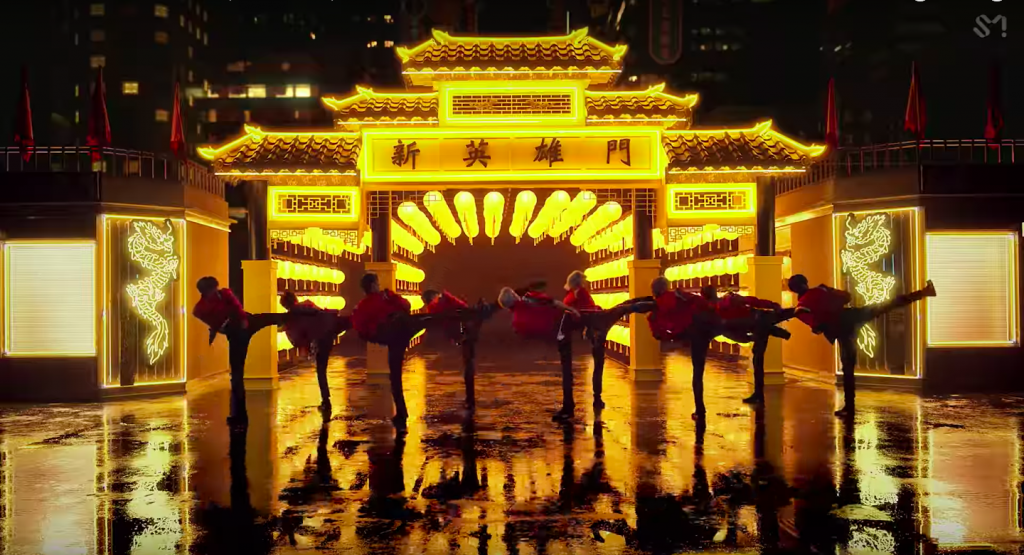
In the bridge, Haechan, Jaehyun, and Taeil dream of the future, but in a manner that aligns with Bruce Lee’s philosophy, “using no way as way.” They have no definitive goals for the future in “Kick It,” but Haechan asserts, “I make my world,” while Jaehyun speaks of “new worlds.” Taeil contemplates fresh starts in singing, “After the darkness I’m born again.” There is strength that comes from persevering through difficulties. NCT 127 remembers the hard work and challenges they overcame to get to this point of their career.
Something new is to be found with each watch of NCT 127’s newest single with its sets, lighting, lyrics, and its demonstration of new sides of the members. “Kick It” also celebrates the “127 squad” (first sung by Yuta) in letting listeners know that this is an NCT 127 song, and this is who they are. As an early line goes, “I’m on fire on fire / When I’m on this stage.” The stage is where NCT 127 shines, and it is where they are the most powerful.
(YouTube, Bruce Lee, Britannica. Lyrics via Color Coded Lyrics. Images via SM Entertainment.)
